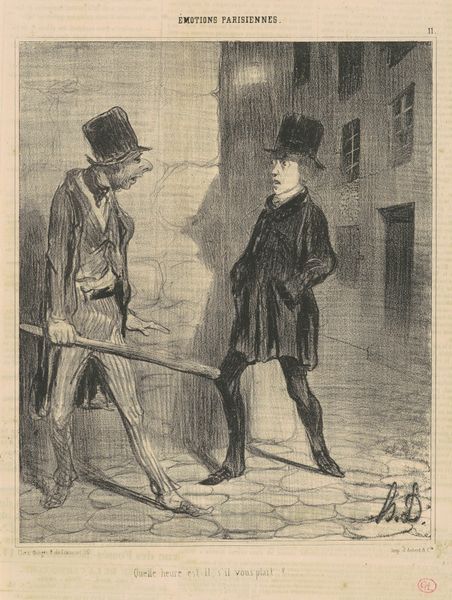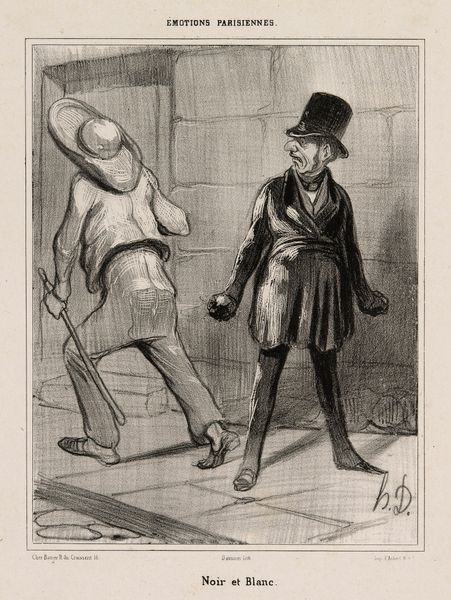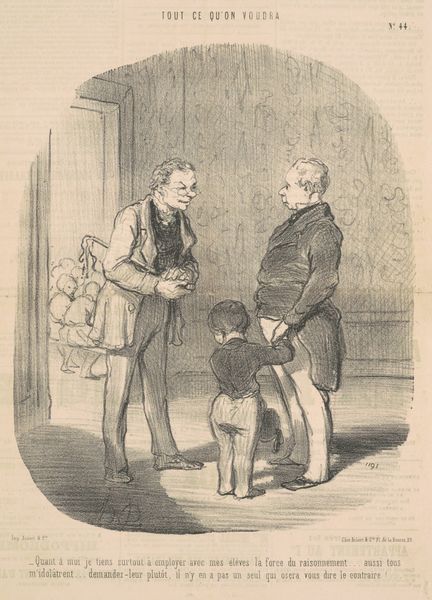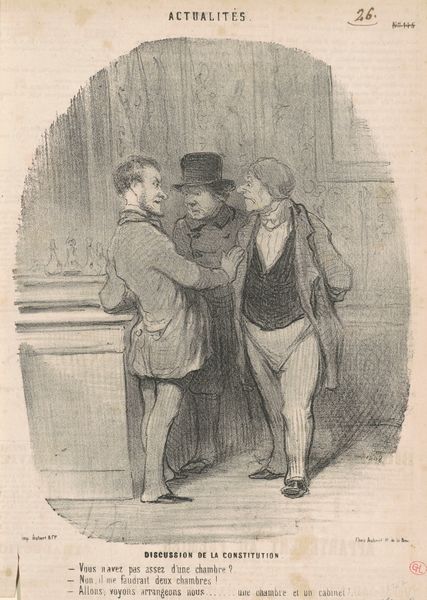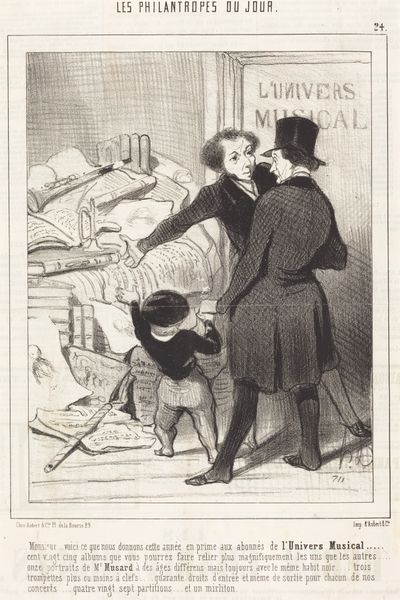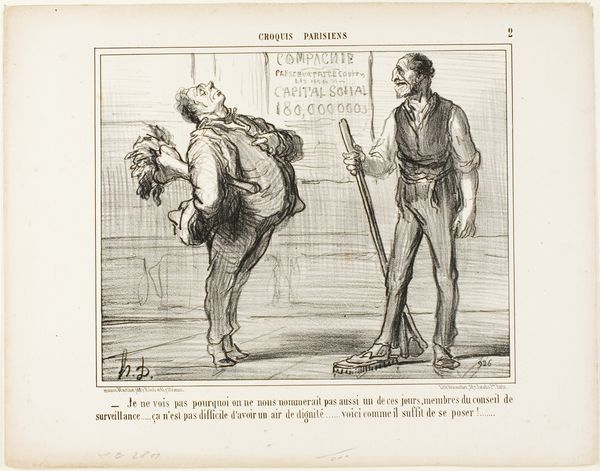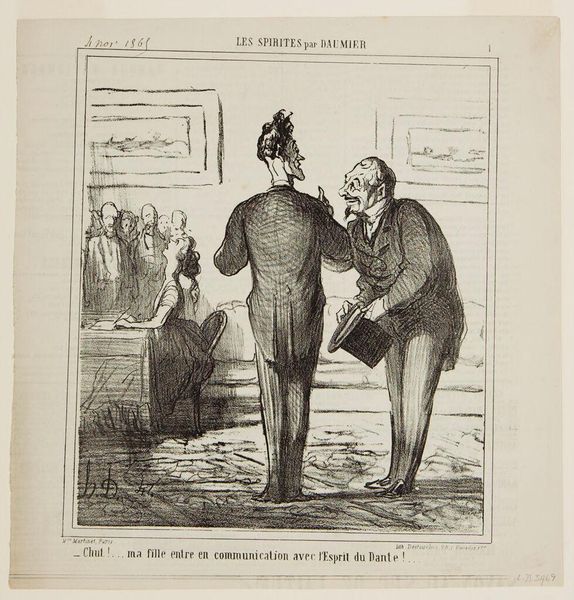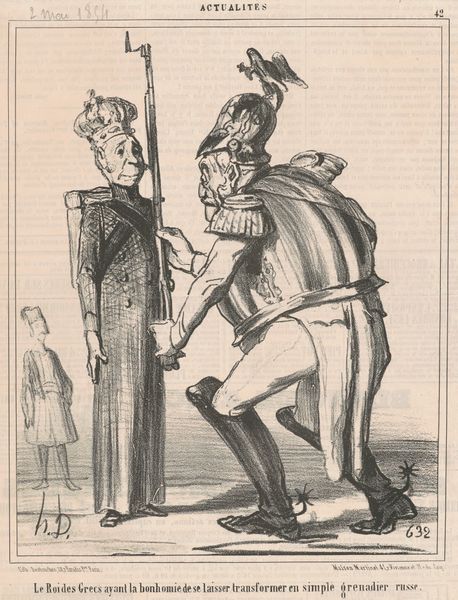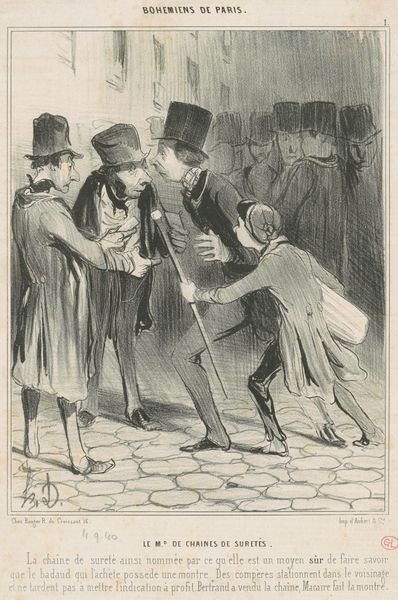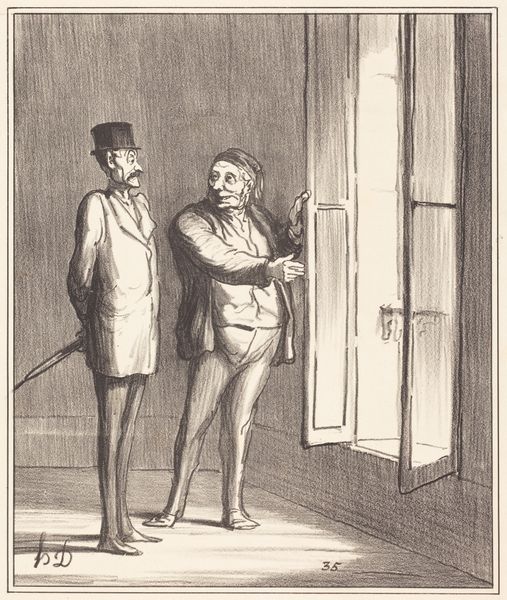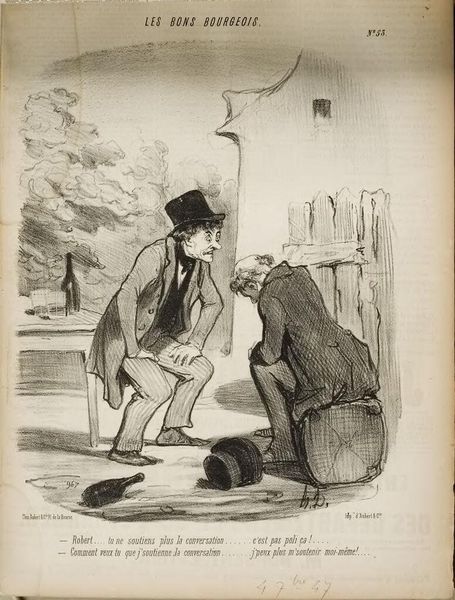
drawing, lithograph, print, pen
#
portrait
#
drawing
#
lithograph
# print
#
caricature
#
romanticism
#
pen
#
genre-painting
#
realism
Copyright: National Gallery of Art: CC0 1.0
Curator: Honoré Daumier's lithograph, dating back to around the 19th century, presents us with a compelling, and frankly, quite bleak vision of... well, what exactly? Editor: Ha! My gut reaction is that I'm witnessing the theater of bureaucracy – souls being slowly crushed in some Parisian waiting room, you know? Look at the bowed figure practically examining the soles of his own shoes – despair made manifest. Curator: Indeed. It's a biting commentary, encapsulated within a print titled “Ma patrie, a moi?...” which translates to "My homeland, to me...?". The inscription tells it all, with a plaintive “Alas, I shall soon have no homeland.” We see, I think, a profound sense of alienation. Editor: Exactly! And the scale...it's diminutive. Not just physically, as a lithograph tends to be, but the characters themselves seem diminished, pressed flat against this suffocating gray background, emphasizing that soul-crushing point that bureaucracy makes. They’re literally smaller than the state pressing down on them, a wonderful metaphor. Curator: The interesting aspect for me is Daumier’s decision to portray this in print form. Mass media was rapidly changing social awareness at this moment. Lithographs are easily reproduced, disseminated, implicating a larger audience, asking everyone ‘where is YOUR homeland?’ It speaks volumes about the potential for civic disruption in that era. Editor: It also lets him be… subversive in a charming, almost slapstick manner! The almost exaggerated caricatures make me laugh out loud as they speak to the universal dread of the common man’s dealings with the power. And, let’s be real – dealing with it still – it has its resonance. Curator: It makes one consider what is retained of those old civic frictions that were expressed by Daumier through accessible graphics: the artist as chronicler, historian, but especially – agitator! It has the impact in some ways of those pamphlets so crucial to earlier revolutions Editor: Oh, agreed, and it is through all those that you're struck by how powerfully simple it still makes us laugh and cringe, with its pointed satire. Almost a reminder of the fragility of our social pact! Curator: Exactly, something definitely relevant even now. Thank you, yes, very profound indeed. Editor: No, thank you for providing that political context that lets you have such an open response to this piece in an audio guide, an engaging method really.
Comments
No comments
Be the first to comment and join the conversation on the ultimate creative platform.
